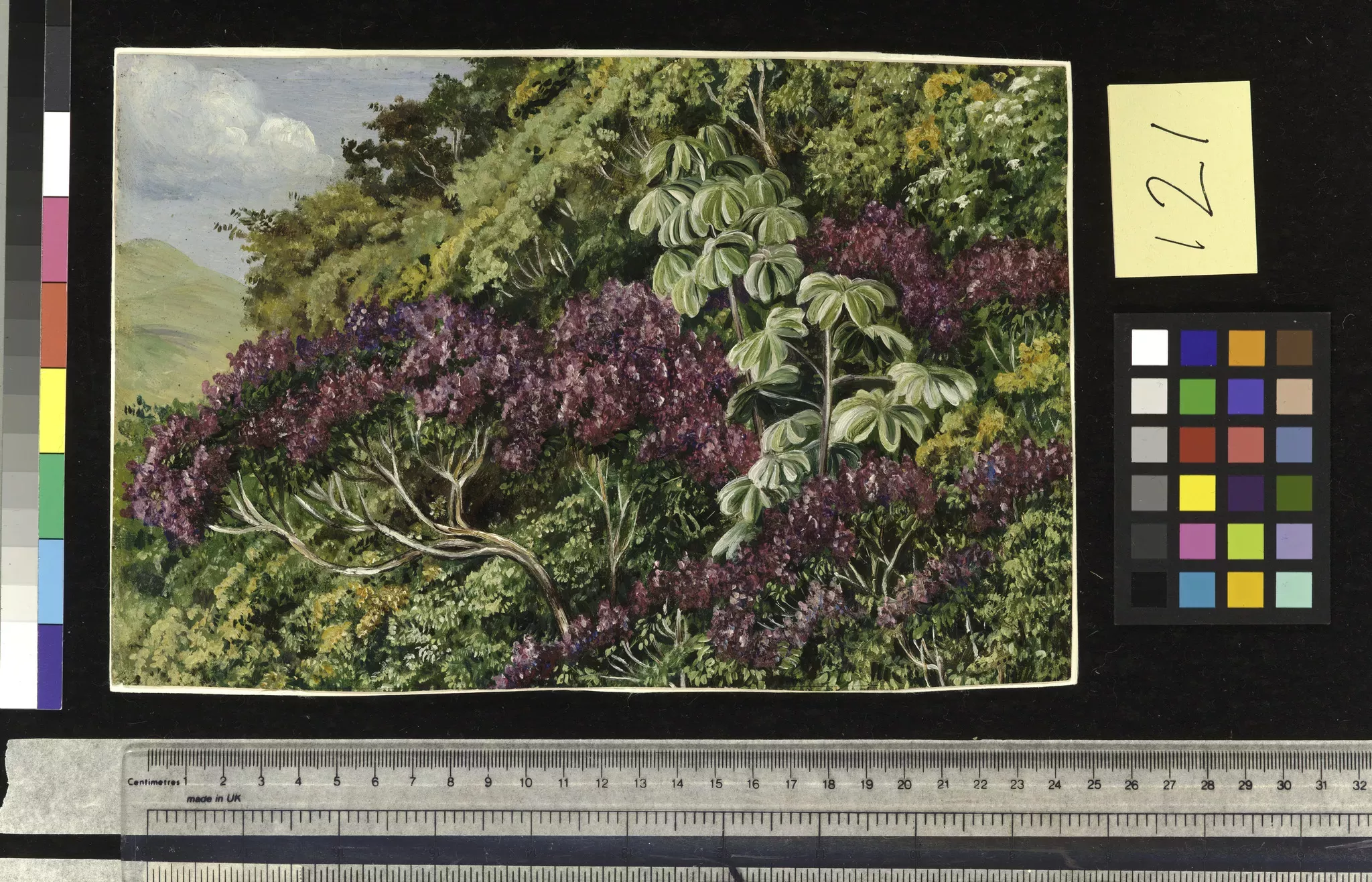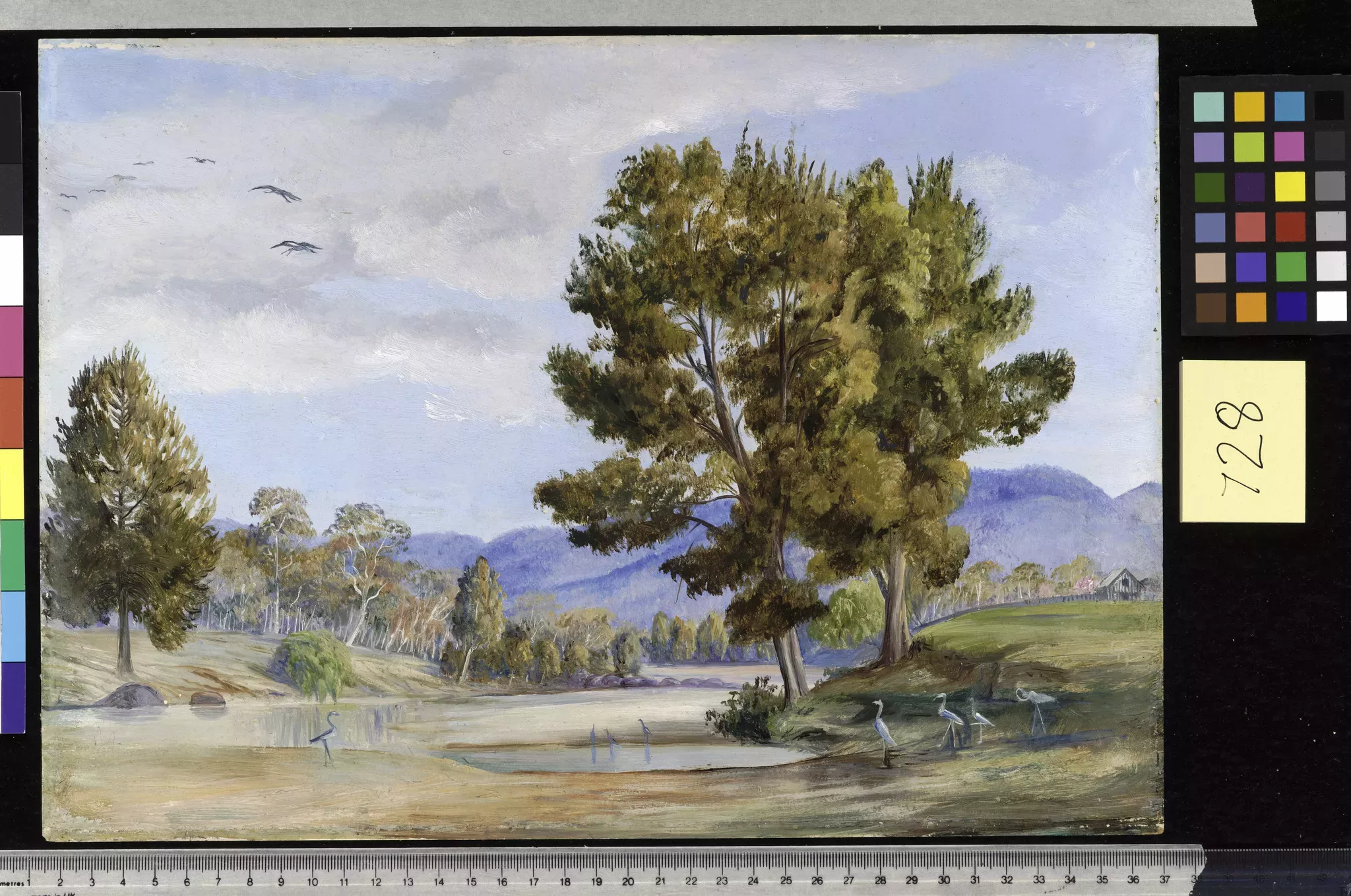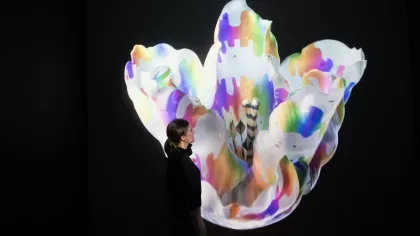Marianne North's painting methods revealed
Research and analysis into Marianne North's painting materials and techniques has now been completed, revealing the secrets behind her artwork.

The research was carried out in collaboration with specialists from the Hamilton Kerr Institute in Cambridge. Analysis of plant derived material was also carried out by the Jodrell Laboratory, based at Kew Gardens.
Paintings were selected to cover all of the colours used from the majority of the countries that she visited. Very small samples, about the size of a pinhead, were taken from 43 of the 833 oil paintings on paper. These samples were then examined as cross sections viewed through a powerful microscope. This makes it possible to see each individual layer of the paint as it was applied, from the ground on the paper, through each layer of paint, to the top layer of varnish. These tiny samples have provided a vast amount of information.
All of the samples show a similar structure with a white ground and one or two paint layers. This was one clue that has led us to believe that Marianne North used a limited palette and favoured certain colours. This is also shown by the fact that these colours recur in many of her paintings. These favourites are cobalt blue, lead white and the red dye Madder.
Marianne North did not use black paint very frequently and this explains the vibrant appearance of her paintings. She preferred to use blue, green or orange to tone down strong colours. Having a restricted palette would also reduce the amount of materials she would need to carry on her travels.
The cross sections also reveal a lot about Marianne North’s painting techniques. For example wet paint was applied over a wet layer indicating a ‘wet-in-wet’ painting technique. This can be seen where the colours are mixed in the cross section and there are no visibly defined layers.
Having only one or two paint layers also indicates that she may have mixed the colours on her palette before applying it to the painting, instead of building up colour gradually in layers. However, thickly painted areas may have been produced with an application of paint mixed directly on the paper.
Some of the paintings were also photographed under infrared light. This can reveal ink lines that are covered by paint. Detailed areas of under-drawing and handwritten notes were detected using this method. These sketches and notes are most likely to be made graphite or ink. This confirms that Marianne North sketched out a composition first and added the colour later, similar to those found on the back of some paintings. It has also been revealed that she re-worked her compositions and even painted entirely different compositions over drawings.
Through this research it has become evident that Marianne North’s technique did not change greatly over the thirteen years that she was painting. She developed a very distinctive and consistent style early on and maintained this throughout her astonishing painting career.
- Emma -




